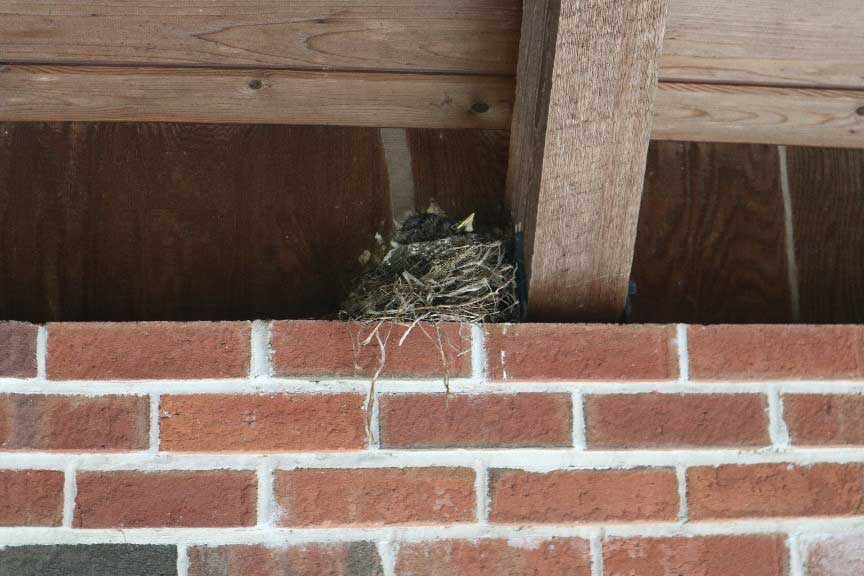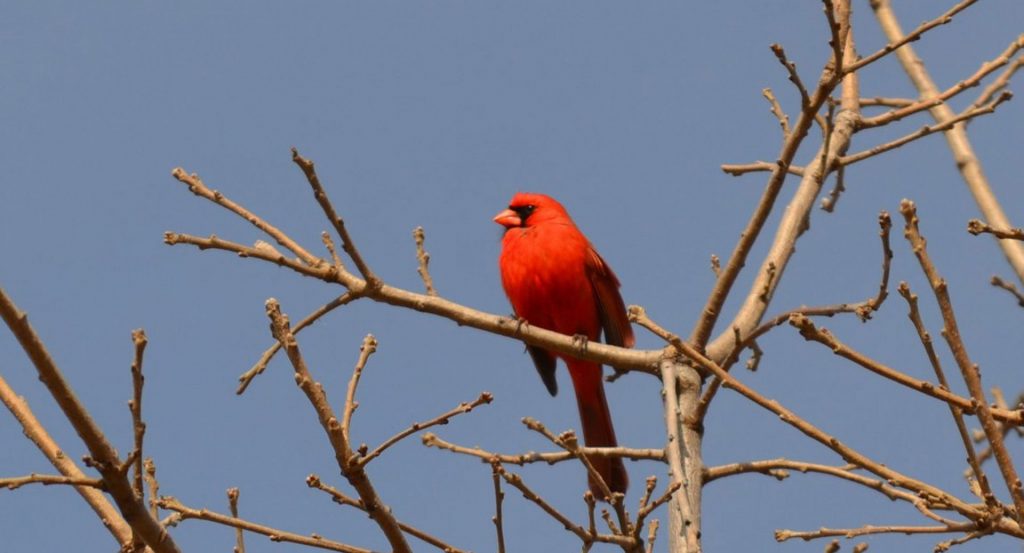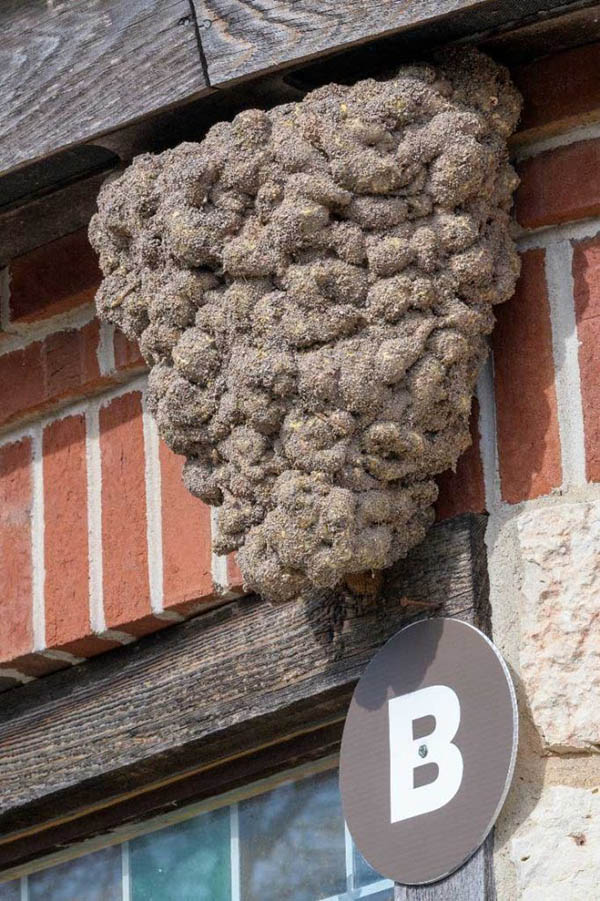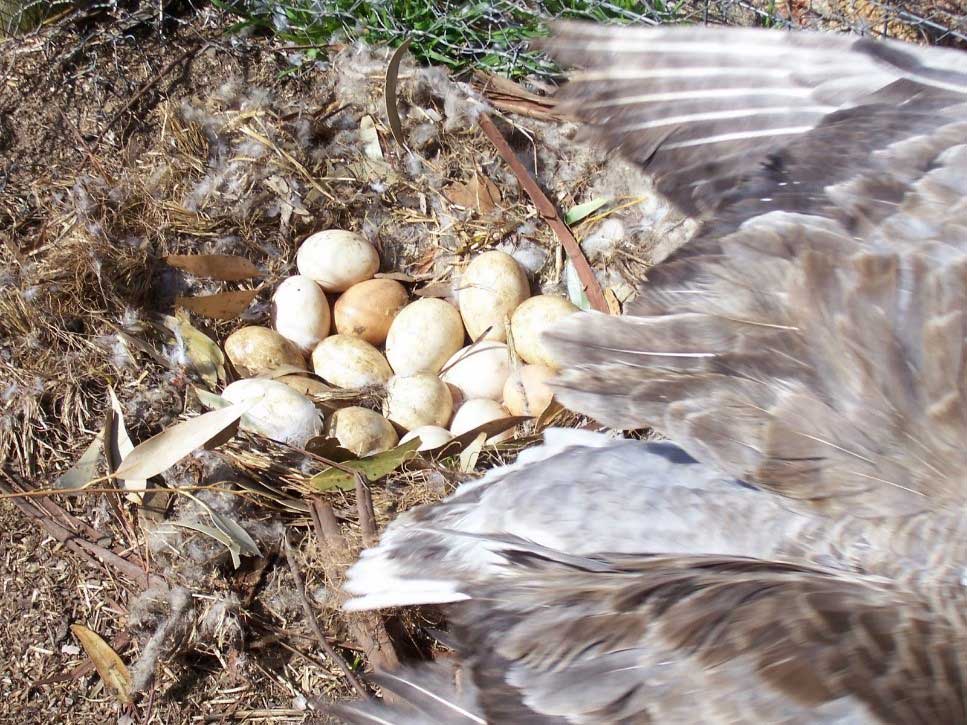Now that summer is ramping up, there are new things beginning everywhere. Specifically, birds are working hard on building their habitats, nests, to raise their young. We see nests everywhere, but how can you tell what types of nests there are and what types of birds are living in them?
In this two-part series, we’re going to look through all the different types of nests and learn more about what they are made from, what they look like, and who lives in them.
Let’s explore urban nests, mud nests, and scrape nests!
Urban Nests
Urban nests are the most commonly seen nest when you’re in the outdoors. These are the nests we typically see on the side of houses or trees in backyards. They are created with whatever the bird can find, usually small twigs, and even trash.

That sounds gross, but trash can serve as a good building material for birds. Trash can help create insulation to keep baby birds warm and even reduce pests! Cigarette butts are shown to reduce ticks, mites, and other small pests that can hurt birds and their babies. Even though trash can be useful as nesting material, you shouldn’t automatically leave garbage and cigarette butts laying around. Trash can be dangerous to birds in large amounts as they can get tangled or choke on it.
Now, who lives in urban nests? Your common neighborhood Carolina wren, House Sparrow, European Starling, American Crow, and Robins are just a few to name.

Cardinals, the vibrant, and loud, birds make the small urban nests and they are also native to Wisconsin. Cardinals create their urban nests anywhere, as long as it’s 15 feet above the ground or more. This prevents predators from reaching the eggs and destroying the nest.
Mud Nests
This next nest is made out of grass, bark hair or feathers, and finally… mud. This may sound dirty, but mud nests are very helpful and beneficial to the birds raising their young. Mud nests are very durable and can stick to vertical surfaces such as cliffs. They are cup shaped and are commonly found in barns, under bridges, cliffs, and other man-made structures.

Barn swallows, cliff swallows, and cave swallows are the common birds that make these nests. Did you know that both the male and the female help create the mud nest for their eggs?
If you ever find yourself on a stroll, and a bird is diving and swooping around your head, that’s probably a barn swallow.
Barn swallows are also native to Wisconsin and make intricate mud nests on the side of buildings, in barns, and under bridges!
Scrape Nests
The final nest we’re exploring is a scrape nest. These nests are made by the bird scraping a shallow hole into the ground. Because this nest is made directly within the ground, it’s easily accessible to predators. These nests are made by birds whose offspring are able to leave the nest quickly after hatching so predators can’t nab them.

Who lives in these nests? Canada Geese, Killdeer, Mallards, and Great Black-Backed Gulls make these types of nests. Do you know who else made these types of nests? Dinosaurs! Many Dinosaurs were too big to make nests in trees, so they made scrape nests to protect their eggs. When their offspring hatched, they were able to quickly leave their nest to move away from oncoming predators.

A challenge for you, try and pay attention outside to see if you can find any of these nests! But don’t get too close, the bird will not like it! Observe the nest from a distance to give space for mom bird and her young to rest.
Make sure to check out the Habitat exhibit to learn more about nests and birds, and other animal habitats!
Next time we will be looking into pendant nests, cavity nests, and platform nests.
Sources





